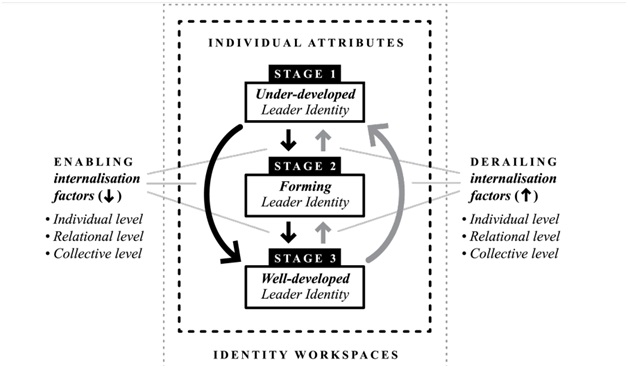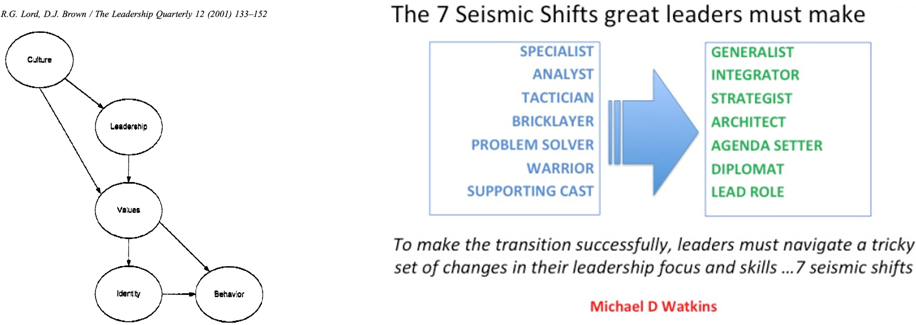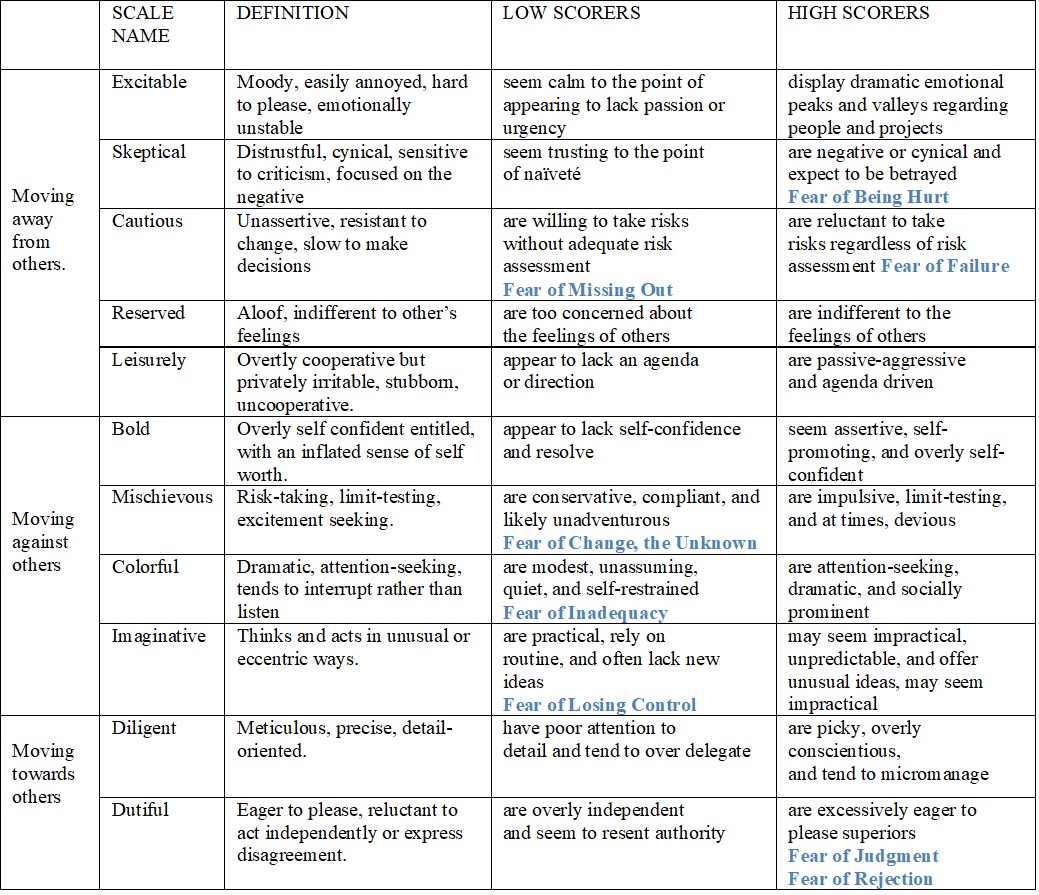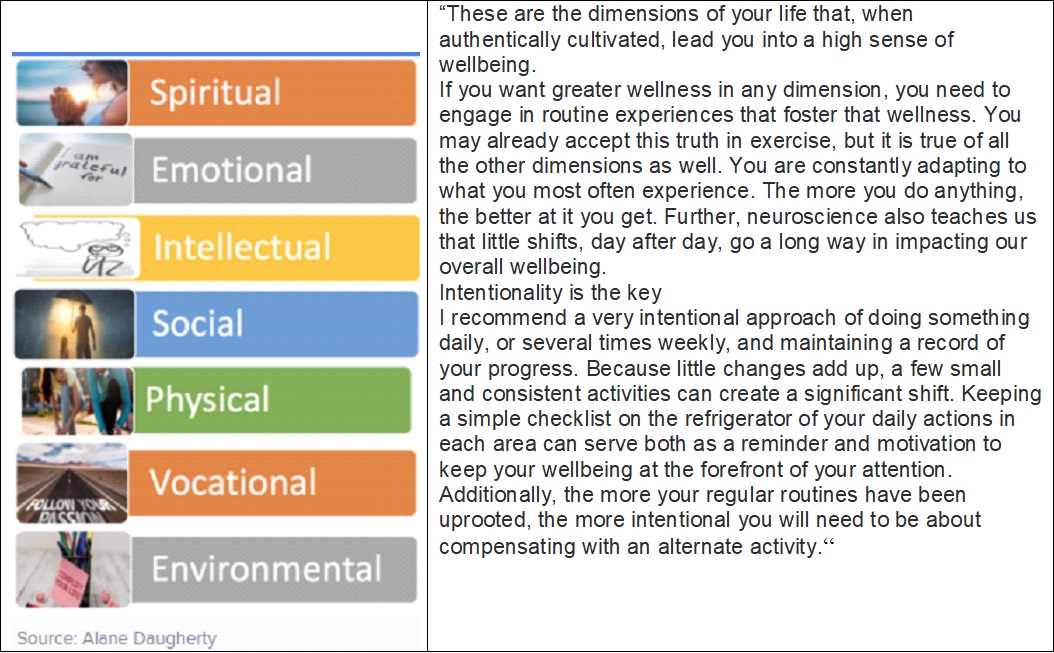Research Paper By Jean-Pierre Loizeau
(Executive Coach, FRANCE)
POSITIONING STATEMENT
As a Talent Developer in a large international firm, my niche is “Coaching Leadership identity (trans) formation in a rapidly changing industry”. Our talent pipeline provides a reservoir of leaders with dynamic upward, horizontal and downward movements. Executives change positions every 3 to 5 years with an often quantum leap in responsibilities. This requires them to reflect on their leadership and modify the way they lead to success in their new responsibilities. These can be challenging times, especially when people go from a manager to a manager-of-manager position or an executive position and when they become a C-level leader.
For executives who have been successful in transitioning to another level, another challenge may also be the discovery through 360° feedback that the positive appreciation of their leadership behaviors and practices is fading away. The emergence of new generational and societal topics constantly impacts people’s expectations and can lead some leadership conducts/leaders’ identity to be quickly obsolete. Therefore, coaching leadership transition is also about being able to support executives updating their leadership practices to remain relevant and deliver value in a shifting context.
A wide array of academic research has highlighted that leaders’effectiveness is enhanced with the existence of a strong leader identity[1]. When executives have a strong leadership identity, it does boost their self-efficacy. The link between people’s engagement and strength of leadership has also been proved by a large number of research papers[2]. The quest for forming and updating leadership identity is therefore important both for the Executive and for the company that employs him/her.
The question that this research paper address is: “how can a coach best support a client in his quest for and constant updating of leadership identity?”
Introduction
What are the “self”-challenges connected to updating your leadership style at the beginning of this 21st century?
Mc Kinsey in its document “Leading agile transformation, the new capabilities leaders need to build 21st-century organizations” of October 2018 describes the mindset shifts that leaders need to execute to be relevant at the beginning of the twenty-first century.
Three shifts of leadership identity are described in a context of change from reactive to creative mind-sets:
In the article ‘Towards a theory of Leadership Identity Formation and its application in executive coaching”[3], Suzette Skinner shares a leader Identity formation theory internalization process. Her finding is that the leader identity formation occurs through a continuum of identity stages developing through an internalization process. This process is not limited to the workplace but includes domains including work, family, and community contexts. The stages of identity formation are subject to many influences that may accelerate, slow-down, or reverse the process. Enablers and derailleurs appear at an individual relational and collective level along the identity formation journey.

The executive coach plays here a key role. He may be called to address a various set of objectives linked to the imposture syndrome, decidophobia, perfectionism, ….The coach can support the client in creating an awareness of what is at play. He/she can then support the executive to navigate the Leader Identity Stages, make the best use versus reduce the impact of Enabling and Derailing factors while leveraging resources from all Identity Workspaces.
Leadership Identity Enabling factors that depend on the leader her/himself to comprehend authenticity as a leader (a challenge for self), connection, and influence from role models and mentors (relational level). Leadership Identity derailers factors that depend on the leader her/himself include self-limiting beliefs, role expectations (relational level). Often “identity uncertainty” constitutes a barrier to identity formation that is namely a stage where individuals feel unclear about their identity as a leader.
There is a real personal challenge for the leader to triumph from these positive and negative influences and create a sense of personal coherence and distinctiveness in her/his leader identity formation. With the support of a coach, the executive can more easily execute self-enhancement and self-transcendence.
Suzette Skinner underlines three roles for the Executive Coach in this leadership identity formation:
- Helping clients clarify their unique leader identity formation stage. This may involve normalizing an under-developed leader identity and engaging in dialogue to support the client to surface his/her narrative of decision making in leadership situations (behavior, emotions, beliefs, values) and explore identity implications.
- Identifying strategies to overcome derailers. This may involve making explicit and empowering the client to find his/her solution to the personal, relational, or collective level derailers that may be undermining the client’s identity formation process.
- Amplifying cross-domain enablers and strengths for leading. This may involve actively exploring the leadership qualities or strengths that clients may show in other identity workspaces (family and community) and designing strategies to translate these into their workplace context.
These 3 roles can be complemented by 2 other ones: reframing personal comparison and perception of self-efficacy. These 2 other factors have the power to create complementary awareness for the client in their quest for a strong leadership identity:
- Exploring their comparison between their intimate self-image versus an ideal best leadership performer[4]. Holding a favorable perspective towards a leadership role: arguably, self-to-leader prototype comparisons help form individuals’ intrinsic leadership motivation. In other words, if their self-image matches how they perceive an ideal best leadership performer in the role, then they may hold favorable perceptions of leadership and see themselves as leaders.
- Perception of Leadership self-efficacy[5]as Bandura’s research has shown that those with high self-efficacy expectancies—the belief that one can achieve what one sets out to do—are healthier, more effective, and generally more successful than those with low self-efficacy expectancies. This poses the question of feedback received by peers and followers on leadership self-efficacy and the need to leverage that feedback into self-transformation to keep a high level of perceived self-efficacy by others[6]`
The 5 roles of the coach described above will provide an individually tailored, confidentially safe, and solutions-oriented relationship to the client for the benefit of his leadership identity formation.
|
Stage 1: Under-Developed Leader Identity. At this stage of formation, individuals do not “see” themselves as a leader. Whilst they may identify with other professional identities (e.g., I am a technical engineer), their self-identity as a leader is not internalized. Leadership is ascribed to external others and is not incorporated as an aspect of their self. Stage 2: Forming Leader Identity. At this stage of formation, individuals do “see” themselves as a leader however the identity is not firmly internalized or clarified. This stage is characterized by the individual actively adopting various leadership approaches or mindsets in crafting their unique leader identity. Within this stage, individuals have an evolving schema for what leadership means for them, with an emphasis on continuing to refine their self-identity as a leader (e.g., I am a technical engineer and I recognize I am becoming a leader). Stage 3: Well-Developed Leader Identity – at this stage of formation, individuals have internalized their leader identity which is described as a part of themself or ‘who I am’ (e.g., I am a leader and a technical engineer). Within this stage, leadership is internalized as a way of being, as individuals enact their leader identity alongside other aspects of the self. |
This research paper explores resources on the 5 roles of the executive coach when supporting their clients to deliver the transformation of self for an inspiring and UpToDateleadership identity.
Role 1 Helping clients clarify their unique leader identity formation stage
In his Harvard Business Review milestone article “How Managers become leaders” [7], Michael Watkins describes 7 seismic shifts that managers or managers of managers must make to become great leaders. This can be thought in perspective with Robert Lord and Doug Brown [8] Leadership identity formation construct that highlights relations to the leader context.

Nations, organizations, groups, and individuals carry latent constructs (or values) involved in evaluating activities or outcomes. Self-identity range from self-categorization based on similarities or differences from other individuals (personal identities) to self-identities based on group membership (social identities). These self-identities mix with leadership construct to create a leadership identity that helps activate context-specific processing structures which in turn regulate cognition, affect, and behaviors. These values & self-concept are visible from a follower standpoint. They act at a mediational level to influence subordinate actions.
In the Oxford Handbook of leadership, David Day underlines that each executive has a personal story embedded in a cultural and family history that has shaped him as an individual and has given him a highly personal combination of values[9]. “Inspiration, and courage – humanity – that the executive draws in the day to day and larger leadership effort.”
In this context, each executive is unique. The way he/she will navigate the seismic shifts of leadership will be highly personal. A coach can support a client in surfacing his values, reflect on connections with followers, and use his unique strengths to form his/her own leadership identity. The coach might be inspired by the concept of Signature Strengths developed by Martin Seligman[10] and support his client in defining and updating a unique leadership signature.
Role 2: Identifying strategies to overcome derailers
The coach will support the client in entering a state of “strategic self-awareness” which is about understanding strengths and limitations, and how they compare with those of peers in the formation of his leadership identity. On the path to leadership identity (trans), formation the leader will have to overcome personal derailers which are in general the flip side of strengths which have proven to be critical in past successes. Letting go of these strengths, putting them on “mute” in certain situations will create fears that are to be overcome. The coach’s role is to accompany the leader in building an awareness of the derailers, identify fears, and self-design strategies to overcome them.
Hogan Assessment suite[11] is a reference tool used by many coaches in the preceding sequence of a coaching journey to allow the executive to step back on his/her potential derailers:
It may not be always possible to get our client to commit to a self-diagnostic using the Hogan suite before the start of the coaching journey. However, it is possible to use a proxy of Hogan derailers simply by the coach asking discovery questions to the leader being coached and eventually also with his/her authorization to his/her followers and peers.
Research has shown that assessment through questionnaires are substantially biased as leadership questionnaires tend to be generic and do not consider[12] the situation in which leadership behaviors occur. In that context, a dialogue with a coach can be even more fruitful and empowering to identify with the client the risks of potential leadership derailment.
Hogan 11 derailers can be used by the coach as an inspiration for exploration. Derailers in the Hogan model can be categorized into 3 categories. The coach questions will aim at exploring with the client the risk zone when under stress in three fields:
Hogan Derailers
 An example of a few potential fears linked to the derailers is mapped into this template to illustrate the potential emotions to be overcome. Fears are personal to the client and may or may not be there. This is therefore just for illustration purposes.
An example of a few potential fears linked to the derailers is mapped into this template to illustrate the potential emotions to be overcome. Fears are personal to the client and may or may not be there. This is therefore just for illustration purposes.
Examining with the client, feedback that she/he received in times both times when the context was positive and times when the “going gets tough” will enable both coach and client to identify potential derailers and ways to address them. The Executive coach will support the client in his/her reflection on their “self-talk” and the beliefs that they hold that are linked to them.
When making the client aware of his derailers, may come the questions of the bringing to the surface of the emotions associated with them. Research has identified 5 core emotions[13]: joy, fear, sadness, disgust, and anger. The fact that emotions vary in terms of intensity and that we can mix different emotions and experience simultaneously hundreds of different emotions makes us face an infinite universe of possibilities.
We will interest ourselves in one of the core emotions that can impede the transformation of self-leadership: “Fear “. A taxonomy of fears by Adam Smith’s recent book comprehends 10 fears that that can help the coach in the support of his client on his leadership transformation journey[14].
If the executive surfaces the fear and understands how to overcome it, she/he can succeed. List of Adam Smith 10 fears:
- Inadequacy (not being skilled enough, the imposture syndrome)
- Uncertainty (being afraid of the unknown)
- Failure
- Rejection
- Missing out (often called the FOMO – the fear of missing out – or constantly wishing that you are somewhere other than where you are right now)
- Change
- Losing control
- Being judged (Feeling vulnerable, or available for attack from others)
- Something bad happening
- Getting hurt
I have composed a repository of strategies to overcome the 10 fears listed by Adam Smith. This resource was built through the reading of a large sample of coaching articles each of them related to overcoming one fear (see in the appendices of this research paper the list of articles). I will just outline three core ideas that can be leveraged by a coach when supporting executives in overcoming fears.
A. Making the fear an object from which can then start the discovery and a reframing discussion:
Distance the client from the fear by [16]:
B. Leveraging “Passion”
Developing a visible and growing passion for a cause can help the client “to unlearn his/her Constant Need to Be Liked and Chosen”[17]. It can also be extremely powerful to annulate the fear of failure, of being hurt, of something bad happening, of missing out. From the space of his/her passion, fears look less important and powerful.
An issue to consider is where the coach and the executive think passion comes from. Research tends to distinguish between “ people who believe that passion comes from doing what they enjoy (which they say is encapsulated by Oprah Winfrey’s commencement address in which she said passion “will bloom when we’re doing what we love”), and those who see it as arising from doing what they believe in or value in life (as reflected in the words of former Mexican President Felipe Calderón who in his commencement address in 2011 said “you have to embrace with passion the things that you believe in, and that you are fighting for”).”[18].
When passion is connected to values, it is more lasting than when connected to enjoyment. In this perspective, the Coach can support the client in defining, revising, or amplifying his passion.
Studies show that passion is not only creating a positive effect for entrepreneurs, it is also a moderator of negative affective consequences and fear of failure in entrepreneurship situations[19].
In the journey of leadership identity, passion is fuel for self-resilience.
C. Increasing Wellbeing
Navigating successfully fears needs clarity of mind. The executive supported by the coach will slow down and pause, create distance to examine and understand the fear, challenge, and reframe it to take courageous actions.
Like a corporate Athlete, the executive will need positive energy to drive the disciplined process of overcoming the fear. Therefore, in the same fashion as a high-level sports champion, the executive has to govern his /her well-being outside of work.
In her article “Recover your wellbeing”[20] Alane Daugherty describes a 7 levels model to explore to create a sense of wellbeing.
Alane K. Daugherty 7 dimensions of life

Key questions that the client can explore with the support of the coach
Role 3 Amplifying cross-domain enablers and strengths for leading.
It is important to understand that we have a multiplicity of self-states[21] without suffering from Multiple Personality Disorder or Dissociative Identity Disorder.
Gregg Henriques, professor of psychology at James Madison University recommends that one thinks of the self as a pattern of behavior through time.
In this view, the “I” is synonymous with what I feel, think, and do feel across time in different situations or contexts. When examined in this light, then the idea that there are multiple self-states becomes clear in the sense that people do very different things across time. This basic insight frees us to think about the self in a much more dynamic way, as opposed to attempting to characterize it as a specific, fixed, and unchanging object.
In different settings, our self-concept is also foundationally shaped both by how others see us and how we see ourselves about others.
For a coach, exploring with the client his or her self-representations that they hold in a different context such as community, family roles, and work can help identify resources that may prove useful in the definition of the leadership identity.
Role 4 Exploring their comparison between their intimate self-image versus an ideal best leadership performer
Research has identified the fact that a comparison of intimate self-image with ideal best leadership performer can be either empowering or discouraging/ inhibiting in the formation of leadership identity.
Role model leaders that would-be leaders have in mind shape their follower’s beliefs and contributions. It is to be noted that followers put more weight on past behaviors than on current ones.[22] This can create a path dependency that can be hard to correct.
The role of the coach is to support the client in surfacing his role model leaders, assess and challenge the way the admired behavior would serve them today, and /or support them in identifying a pipeline of best leadership performers to have in mind a wider library of leadership model performer resources.
Role 5 Perception of Leadership self-efficacy
Bandura’s research has shown that leaders with high self-efficacy expectancies—the belief that one can achieve what one sets out to do—are healthier, more effective, and generally more successful than those with low self-efficacy expectancies.
A key stake for the coach [23] is to create a sense of ever-growing leadership self-efficacy in the mind of his executive client without creating a risk of becoming arrogant.[24]
Coaching a higher self-judgment is important for the success of the leader. The more capable people self-assess themselves, the higher the next goal they will define for themselves and the strongest will be the commitment they will show for them.
The role of the coach is to support the client to develop a feeling of self-efficacy. This support can be at play around 4 axes that the client may explore:
Mastery experiences
The upfront review of career history and attention is given to mastery moments as an opportunity to boost self-efficacy. For this purpose, lifeline exercises can be used to surface the most important moments.
Modeling others
Learning starts with watching others and then imitating or modeling them. The shift from imitation to innovation to produce a more personal leadership style can be supported by a coaching accompaniment.
Verbal persuasion
Self-reinforcement is a very effective way to empower individuals to control their behavior by rewarding themselves when a certain standard of performance has been attained or surpassed.
Self-reinforcement improves self-esteem, goal setting, time management, and independence. The coach can support the executive in imaging what reward she/he will grant oneself for the achievement of new behaviors connected to his target leadership identity formation.
Alignment of actions with values
“Working hard for the company vs dying for a cause” illustrates dramatically the power of alignment to values. The executive coach can support the client to explore the links and opportunities for alignment with values while making her/him aware and designing strategies to manage risks.
Conclusions
Coaching the continuous self-transformation for leadership can leverage 3 assets:
(The exploration of this last paragraph was the object of this research paper).
Bibliography
(List of other articles or books not referenced in this research paper)
https://www.cnbc.com/2017/05/18/the-10-biggest-fears-holding-you-back-from-success.html
“The Bravest You: 5 Steps to Fight Your Biggest Fears, Find Your Passion and Unlock Your Extraordinary Life,” Adam Smith
Fight the Fear, Mandie Holgate
How to overcome your fear of failure
https://hbr.org/2018/12/how-to-overcome-your-fear-of-failure
https://positivepsychologynews.com/news/bridget-grenville-cleave/2012013120696
How to overcome the fear of rejection
As a Man Thinketh, James Allen
How to overcome the fear of losing control
https://www.psychologytoday.com/intl/blog/what-would-aristotle-do/201105/the-fear-losing-control
Walter Kaufmann in his book Without Guilt and Justice
How to overcome the fear of change at work
How to overcome the fear of inadequacy / the imposture syndrome
How to overcome the fear of missing out
https://time.com/4358140/overcome-fomo/
The Paradox of Choice: Why More Is Less, book by Barry Schwartz
Overcoming the fear of being judged
https://archive.coachcampus.com/coach-portfolios/power-tools/rakaelcarr-affirmation-vs-judgement/
https://www.psychologytoday.com/us/blog/happiness-in-world/201104/the-two-kinds-belief
How to overcome the fear of uncertainty
How to overcome the fear of something bad happens
https://www.teamawesomecoaching.com/fear-of-the-future/
Overcoming the fear of getting hurt / the fear of love
https://www.psychologytoday.com/intl/blog/compassion-matters/201402/5-ways-overcome-your-fear-love
Coaching away from and towards a goal
https://coachingleaders.co.uk/towards-away-motivation/
https://www.mindsonar.info/towards-and-away-from-what-does-motivational-theory-say/
Derailers
https://www.hoganassessments.com/assessment/hogan-development-survey/
https://hbr.org/2017/09/could-your-personality-derail-your-career
http://www.awair.eu/wp-content/uploads/2017/06/Identifying-Derailers.pdf
https://www.sciencedirect.com/science/article/pii/S1048984317308147
Passion and purpose
https://www.psychologytoday.com/ca/blog/healing-stress-the-inside-out/202007/recover-your-wellbeing
The psychology of finding your passion in life
https://digest.bps.org.uk/2018/11/15/how-to-find-your-calling-according-to-psychology/
Igniting passion from within: how to lay beliefs guide the pursuit of work passion and influence turnover
Philosophy of Coaching: An International JournalVol. 5, No. 1, May 2020, 71-89.
http://dx.doi.org/10.22316/poc/05.1.07
Towards a theory of Leader Identity Formation and its application in executive coaching
Suzette SkinnerRoar People Pty Ltd Sydney, Australia
http://philosophyofcoaching.org/v5i1/07.pdf
[1] Guillén, L., Mayo, M., & Korotov, K. (2015). Is leadership a part of me? A leader identity approach to understanding the motivation to lead. The Leadership Quarterly, 26(5), 802-820. https://www.sciencedirect.com/science/article/pii/S1048984315000582
[2] Drivers of employee engagement: the role of Leadership Style
[3] ‘Towards a theory of Leadership Identity Formation and its application in executive coaching” Philosophy of coaching: an International Journal VOL5 N1 May 2020 http://dx.doi.org/10.22316/poc/05.1.07
[4]Is leadership a part of me? A leader identity approach to understanding the motivation to lead https://www.sciencedirect.com/science/article/pii/S1048984315000582#bb0560
[5] Bandura, 1997 A. Bandura Self-efficacy: The exercise of control Freeman, New York, NY (1997)
[6] One Powerful way to control your leadership reputation by Glenn Llopis https://www.forbes.com/sites/glennllopis/2014/04/14/one-powerful-way-to-control-your-leadership-reputation/#51a8d52e3931
[7]How Managers Become Leaders by Michael Watkins, Harvard Business Review, June 2012.
[8] Leadership, Values, and subordinate self-concepts Robert G Lord, Douglas J Brown The Leadership Quarterly
http://web.stanford.edu/~tylerwe/pwr/leadership.pdf
[9]The Oxford Handbook of Leadership and Organizations, page 33 Author David Day.
[10]Authentic Happiness: Using the new positive psychology to realize your potential for lasting fulfillment by Martin E.P Seligman.
[11] Could your personality derail your career by Tomas Chamorro-Premuzic Harvard Business Review https://hbr.org/2017/09/could-your-personality-derail-your-career
[12]Tell us about your leadership style: a structured interview approach for assessing leadership behavior constructs https://www.sciencedirect.com/science/article/pii/S1048984317308147
[13]https://www.iamheart.ca/single-post/2017/07/07/The-5-Basic-Emotions
[14]“The Bravest You: 5 Steps to Fight Your Biggest Fears, Find Your Passion and Unlock Your Extraordinary Life,” A book by Adam Smith
[15]Leadership, Values, and subordinate self-concepts Robert G Lord, Douglas J Brown The Leadership Quarterly
http://web.stanford.edu/~tylerwe/pwr/leadership.pdf
[16] Expert coaching tips to help you overcome the fear of making decisions by Forbes Coaches Council
https://www.forbes.com/sites/forbescoachescouncil/2017/07/05/expert-coaching-tips-to-help-you-overcome-thefear-of-making-decisions/#5d115ea3c923
[17] How to unlearn your constant need to be liked and chosen by Antony Moore
[18]Igniting Passion from Within: How Lay Beliefs Guide the Pursuit of Work Passion and Influence Turnover Jon Jachimowicz Columbia University, Christopher To New York University, Jochen I. Menges Otto Beisheim School of Management, Modupe Akinola Columbia University.
[19]The dualistic regulatory effect of passion on the relationship between fear of failure and negative affect: Insights from facial expression analysis https://www.sciencedirect.com/science/article/pii/S0883902618308243
[20]Recover your wellbeing Alane K. Daugherty https://www.psychologytoday.com/ie/blog/healing-stress-the-inside-out/202007/recover-your-wellbeing?amp
[21] One Self or Many Selves? Understanding why we have a multiplicity of self-states. ¨Psychology Today April 2014
[22]Leaders as role models and ‘belief managers’ in social dilemmas – Journal of Economic Behavior Oct 2018
[23]Improving self-efficacy with coaching
[24]https://www.forbes.com/sites/jeffhyman/2018/10/31/humility/#1cbe51881c80 Why humble leaders make the best leaders. Jeff Hyman October 2018.
